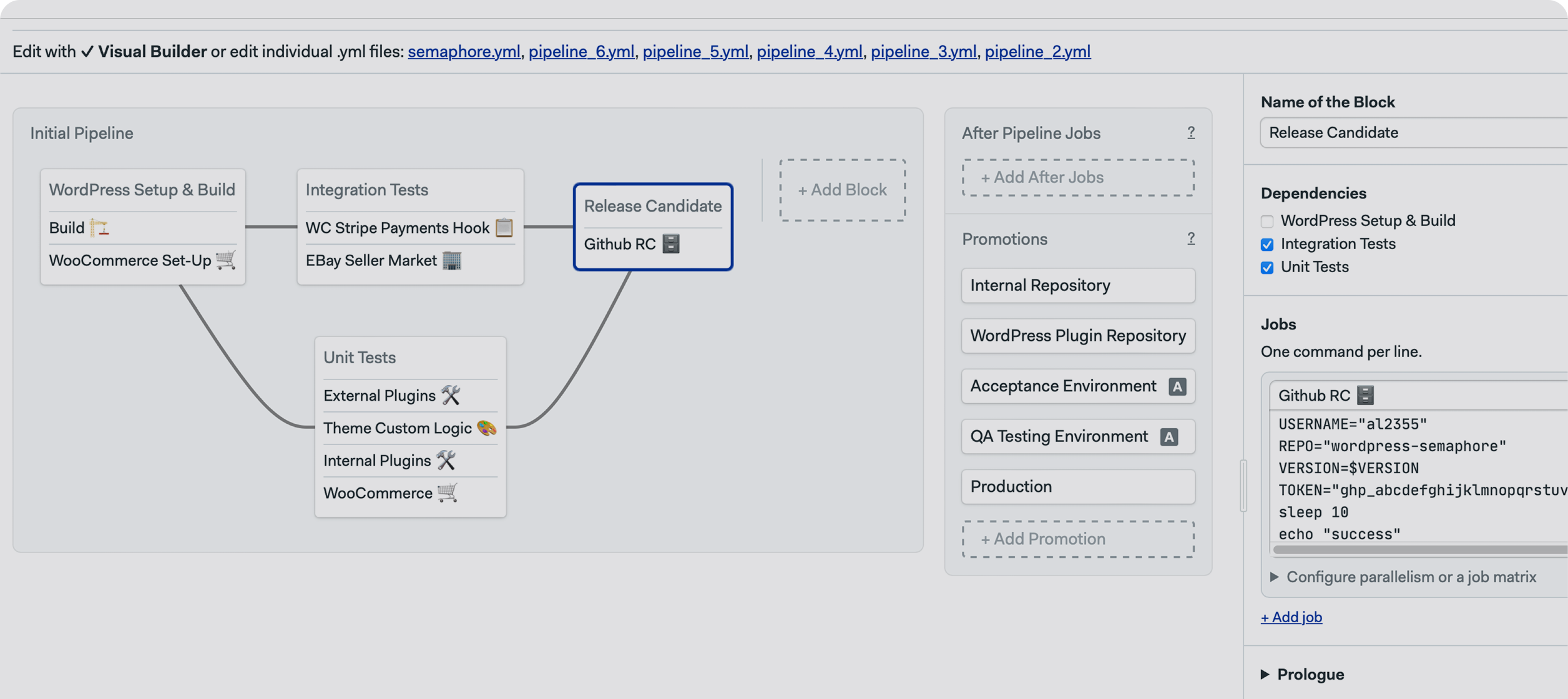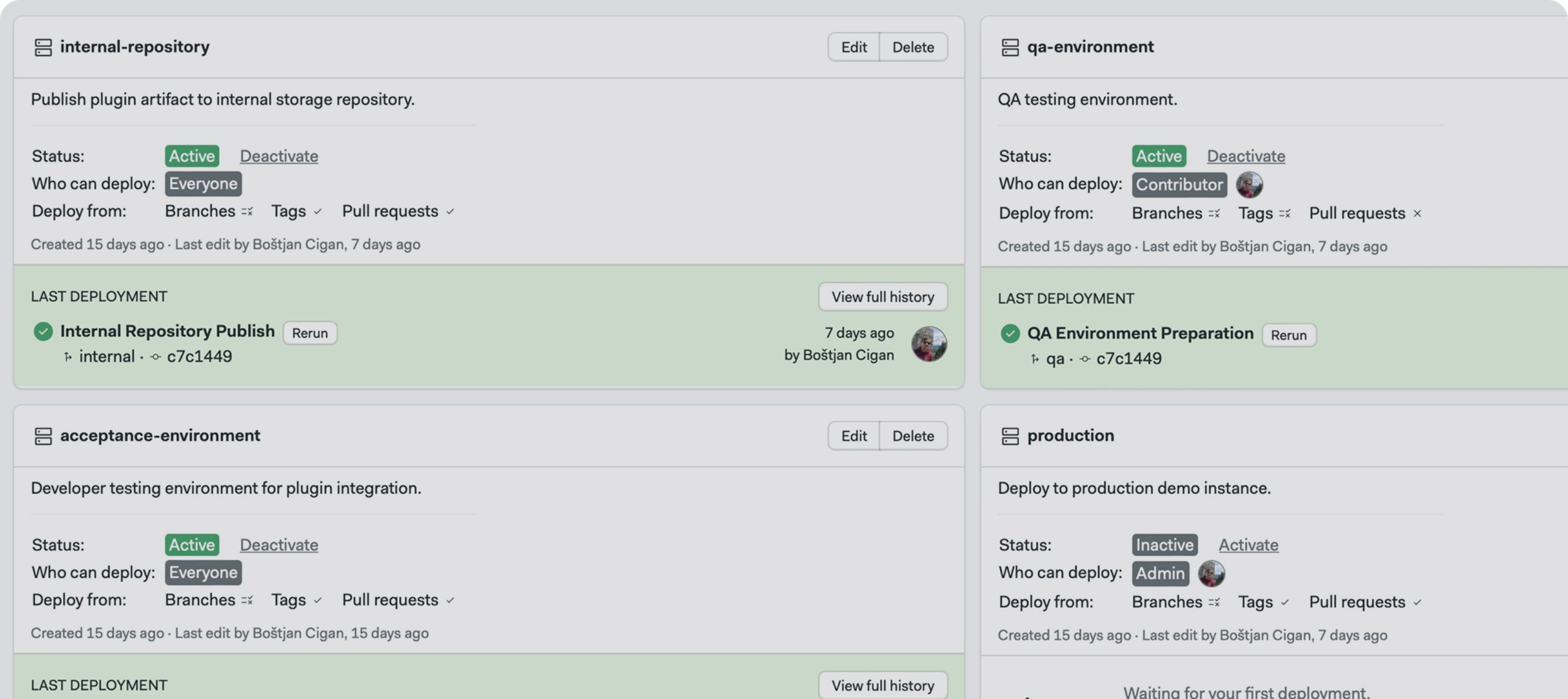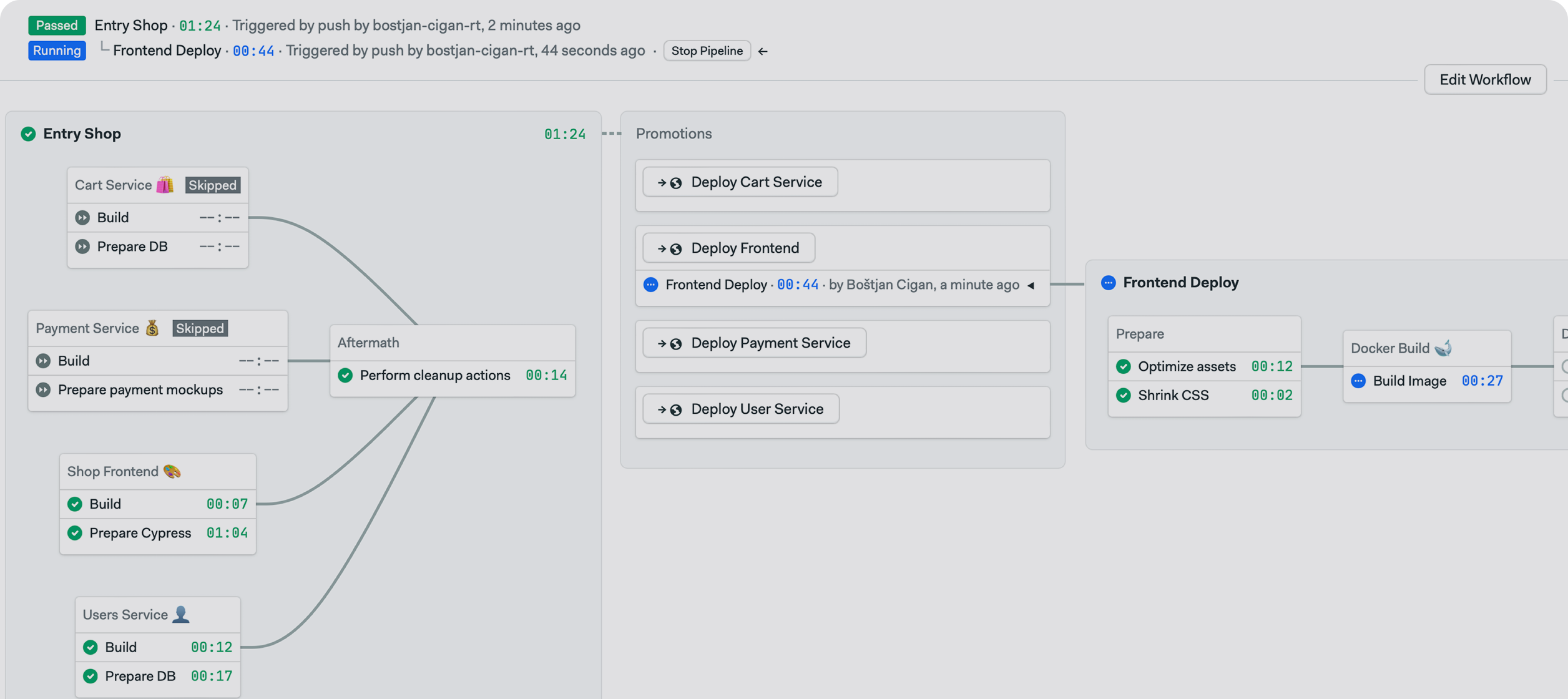All-in-one delivery platform for AI-driven development.

🏅 Proud Member of the Open Source Community
Semaphore is now a Silver Member of The Linux Foundation — a major milestone that reinforces our commitment to open standards, developer empowerment, and the future of open source.
Our features for AI-driven CI/CD
🌐 MCP Server
- Connect AI agents to the CI using Model Context Protocol (MCP).
- Expose custom tools, data sources, and workflows directly to AI-powered pipelines.
- Build reliable automation powered by AI.
🧱 Visual Workflow Builder
- Design pipelines visually and auto-generate YAML.
- Onboard faster with visual performance feedback.
📈️️ Promotions
- Automate deployments to streamline updates in test environments.
- Control releases by adding approvals for critical stages.
🎯 Deployment Targets
- Secure deployments by controlling access and setting conditions.
- Simplified management to ensure compliance with ease.
📁 Monorepos Support
- Make builds smarter by triggering only relevant parts of your monorepo.
- Speed up workflows by minimizing build times with targeted updates.
These folks chose Semaphore
GoCo cut their continuous integration (CI) pipeline duration in half and reduced costs by 38% after migrating from CircleCI.

Semaphore has remained a great match for our needs as our workflows have grown in complexity.
“Semaphore is a great solution with an amazing support team that adapts to any need you have.“
We wanted one unified CI/CD system for the entire company—no more juggling tools across teams.
Semaphore reduced CI build times from over an hour to 10-12 minutes
FAQs
CI/CD stands for Continuous Integration and Continuous Delivery (or Deployment). It automates code integration, building, testing, and deployment—enabling faster release cycles, improved code quality, fewer human errors, and higher developer efficiency. Semaphore’s cloud-based CI/CD platform makes adopting these practices seamless, powering engineering teams at top tech companies to ship updates multiple times per day.
• Continuous Integration (CI): Developers frequently merge code into a shared repository, triggering automated builds and tests, with feedback ideally delivered in under 10 minutes.
• Continuous Delivery (CD): Extends CI by automating delivery to staging or production environments, typically requiring manual approval before release.
• Continuous Deployment: Goes one step further by automatically releasing every change to production without manual intervention.
A CI/CD pipeline—particularly a fast, reliable one like Semaphore—automates build, test, and deployment steps to deliver code at high velocity.
Key benefits include:
• Faster delivery and more frequent releases, sometimes multiple times per day.
• Higher code quality through early error detection and comprehensive testing.
• Reduced deployment risk, fewer mistakes, and greater efficiency.
Semaphore also provides autoscaling, pay-as-you-go pricing, native Docker support, and fast setup to minimize friction.
Semaphore follows proven best practices to maximize speed and stability, including:
• Using version control for traceability and smooth collaboration.
• Automating builds with Docker and caching mechanisms to accelerate pipelines.
• Running fast, fundamental tests first, while parallelizing workloads in clean, isolated environments.
• Leveraging autoscaling infrastructure and smart triggers to dynamically match demand.
Semaphore offers two editions:
• Semaphore Cloud, a fully managed service—no maintenance required.
• Semaphore Community Edition (CE), a free, open-source version you can self-host on Linux machines or Kubernetes clusters, with detailed installation and configuration guides provided.
• Semaphore Enterprise Edition (EE), commercial, fully-featured Semaphore instance that can be self-hosted on Linux machines or Kubernetes clusters. Meant for large companies who wish to host their CI/CD on-premise and require premium support.
Semaphore helps engineering teams ship software faster and with greater confidence. Unlike many CI/CD providers, Semaphore emphasizes:
• Speed (pipelines optimized to deliver results in minutes with parallelism and caching).
• Scalability (automatic machine scaling and flexible pay-as-you-go pricing).
• Flexibility (support for Docker, Kubernetes, and any programming language or framework)
• Simplicity (intuitive YAML configuration and seamless integration with GitHub, GitLab, or Bitbucket).
While all CI/CD tools automate builds, tests, and deployments, Semaphore’s focus on performance and developer productivity makes it a strong choice for teams that need both speed and reliability.
You can be up and running in minutes:
1. Sign up for a free Semaphore account.
2. Connect your Git repository.
3. Push an example pipeline.
4. Explore guided tours and sample projects in the Semaphore docs.
This frictionless setup—combined with autoscaling, Docker support, and intuitive workflows—lets teams adopt efficient CI/CD practices quickly.
The Visual Workflow Builder lets you design CI/CD pipelines without writing YAML. It enables faster onboarding and setup through an intuitive drag-and-drop interface.
Yes. Semaphore provides a cloud-native, fully managed CI/CD platform that autosscales on demand and offers pay-as-you-go pricing with instant feedback loops.
Yes. You can use Semaphore as SaaS, run hybrid self-hosted job runners, or deploy the fully open-source Community Edition.
Absolutely. Semaphore is designed for containerized workloads, Kubernetes clusters, and multi-cloud deployments.
Yes. Semaphore natively supports monorepos and performs incremental builds, rebuilding only the components that changed.
Yes. Pipelines can automatically parallelize jobs and scale horizontally to deliver faster build times.
Yes. You can run builds in CI-optimized Docker images or your own custom containers.
Yes. Semaphore supports all major languages, frameworks, and services — with full root-level access in jobs.
Yes. Migrating from legacy CI systems can deliver up to 50% guaranteed cost savings.
Yes. Semaphore lets you define pipelines with promotions, manual approvals, and separate test/production workflows.
Yes. Deployment governance allows you to control deployments based on environment, schedule, or team permissions.
Yes. You can cache dependencies to significantly reduce build times.
Yes. Semaphore provides analytics on pipeline bottlenecks, team productivity, and overall CI performance.
Yes. Testing Intelligence includes flaky test detection, aggregated test reporting, and reliability dashboards.
Yes. Access Control lets you assign roles and permissions across teams and projects.
Yes. Semaphore includes a full CLI and API for automating and managing CI/CD programmatically.
Yes. Hybrid Execution allows you to self-host job runners to optimize performance and reduce compute costs.
Yes. The Community Edition provides a complete self-hosted CI/CD platform for on-premise or cloud environments.
Yes. A free Enterprise Edition is available for eligible companies.




